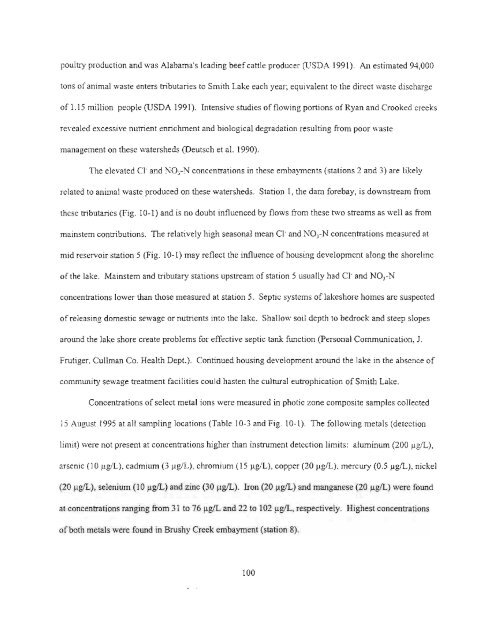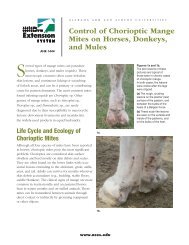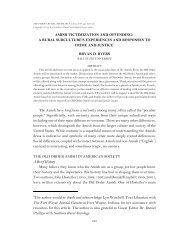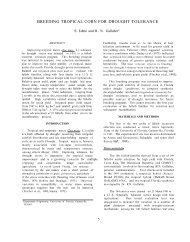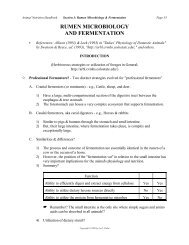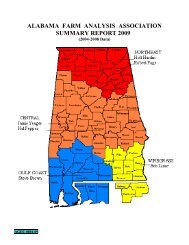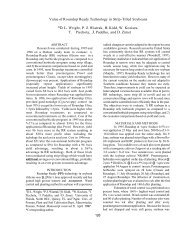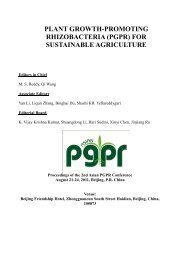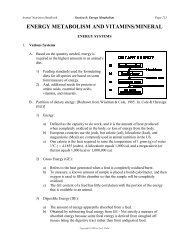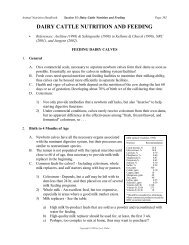LEWIS SMITH LAKE - Auburn University
LEWIS SMITH LAKE - Auburn University
LEWIS SMITH LAKE - Auburn University
Create successful ePaper yourself
Turn your PDF publications into a flip-book with our unique Google optimized e-Paper software.
poultry production and was Alabama's leading beefcattle producer (USDA 1991). An estimated 94,000<br />
tons of animal waste enters tributaries to Smith Lake each year; equivalent to the direct waste discharge<br />
of 1.15 million people (USDA 1991). Intensive studies offlowing portions ofRyan and Crooked creeks<br />
revealed excessive nutrient enrichment and biological degradation resulting from poor waste<br />
management on these watersheds (Deutsch et al. 1990).<br />
The elevated CI' and NO,·N concentrations in these embayments (stations 2 and 3) are likely<br />
related to animal waste produced on these watersheds. Station I, the dam forebay, is downstream from<br />
these tributaries (Fig. 10-1) and is no doubt influenced by flows from these two streams as well as from<br />
mainstem contributions. The relatively high seasonal mean CI' and NO,-N concentrations measured at<br />
mid reservoir station 5 (Fig. 10-1) may reflect the influence ofhousing development along the shoreline<br />
ofthe lake. Mainstem and tributary stations upstream of station 5 usually had Cl' and NO,·N<br />
concentrations lower than those measured at station 5. Septic systems oflakeshore homes are suspected<br />
ofreleasing domestic sewage or nutrients into the lake. Shallow soil depth to bedrock and steep slopes<br />
around the lake shore create problems for effective septic tank function (personal Communication, J.<br />
Frutiger, Cullman Co. Health Dept.). Continued housing development around the lake in the absence of<br />
community sewage treatroent facilities could hasten the cultural eutrophication ofSmith Lake.<br />
Concentrations of select metal ions were measured in photic zone composite samples collected<br />
15 August 1995 at all sampling locations (Table 10-3 and Fig. 10-1). The following metals (detection<br />
limit) were not present at concentrations higher than instrument detection limits: aluminum (200 I"gIL),<br />
arsenic (10 I"gIL), cadmium (3 I"gIL), chromium (15 I"gIL), copper (20 I"gIL), mercury (0.5 I"gIL), nickel<br />
(20 I"gIL), selenium (10 I"gIL) and zinc (30 I"gIL). Iron (20 I"gIL) and manganese (20 I"gIL) were found<br />
at concentrations ranging from 31 to 76 I"gIL and 22 to 102 I"gIL, respectively. Highest concentrations<br />
ofboth metals were found in Brushy Creek embayment (station 8).<br />
100


